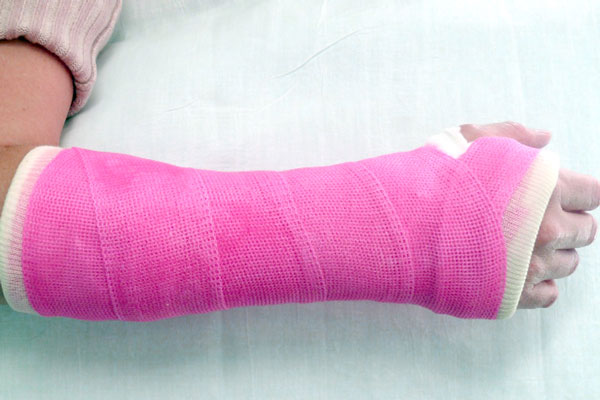Open Reduction and Internal Fixation
Bone fractures are one of the most common injuries that are usually caused by sports, car accidents, falls, or the ageing of bones (osteoporosis). Treatments are required to put the broken bone pieces back together and prevent further complications.
Reduction is the surgical procedure to repair bone fractures and realign the dislocated bones to their anatomical positions. Depending on the severity of bone fractures, reduction procedures can be performed by either the "closed" or "open" method.

What are an open reduction and an internal fixation?
An open reduction and internal fixation (ORIF) is a surgical procedure to repair broken bones. It involves aligning the bone back into the right place with an open incision (open reduction) and holding the broken bones together using metal screws, plates, sutures, or rods (internal fixation). It is often done as an emergency procedure.
What are the indications for open reduction and internal fixation?
ORIF surgery is recommended when the non-surgical or closed reduction treatment did not heal the condition properly or when the bone fractures are so severe that:
- The bones are broken into multiple pieces.
- The broken bone pieces are sticking out of the skin.
- The bones or joints are dislocated.
What are the pre-procedure care for open reduction and internal fixation surgery?
As ORIF is usually performed as an emergency procedure, a surgeon may ask about:
- Medicines and supplements you are taking
- Time of your last meal
- Allergies and other medical conditions you have
If the surgery is planned, then some instructions will be given by the surgeon to prepare you for the procedure. This includes:
- Temporarily discontinue certain drugs at least one week before the procedure, as they may cause complications during the surgery. E.g., aspirin, ibuprofen
- Do not eat or drink anything for 6 to 8 hours before your surgery.
- Arrange for someone to ride you to and from the hospital and to help you at home after the surgery.
Anaesthesia
Prior to the procedure, the anaesthesia team will discuss the type of anaesthesia to be used for the surgery. They will also ask about any previous history of allergies to anaesthesia and examine your general health. ORIF surgery is usually performed under either general anaesthesia or, in some cases, regional anaesthesia. General anaesthesia will put you into an unconscious state during the procedure, while regional anaesthesia will only numb the portion of the body that will undergo the surgery.
How are open reduction and internal fixation surgery performed?
An ORIF surgery may take several hours, depending on the severity of the fracture and its location.
The surgery is performed in two stages. The first stage aims to restore the normal alignment of the fractured bones, while the second stage aims for internal fixation. The procedure involves the following steps:
- Anaesthesia will be administered before the procedure, along with a nerve block (an injection that will block the pain signals along a group of nerves) to decrease pain after surgery.
- The surgeon will make a few incisions in the skin over the fractured bone.
- Through these incisions, the surgeon will move the pieces of bone to the correct position.
- The broken bone pieces are then held together using metal plates, rods, sutures, or screws.
- Incisions are closed using stitches or staples and covered with surgical bandages.
- A cast or splint will be put on in order to protect the area as it heals.
- Immediately after the procedure, an X-ray is taken to confirm that the bones are in the correct position.
What is the post-procedure care?
After the procedure, you will be taken to a recovery area where you will be closely monitored until you are awake. In most cases, patients can go home the next day after the surgery, but some cases may require a longer hospital stay.
During your hospital stay, your surgeon will recommend a physiotherapist who will teach you how to regain strength and motion in the operated area. He or she will also teach you how to use supportive devices such as crutches, wheelchairs, etc.
Post-procedure care at home includes:
- Mild pain and discomfort a few days after the surgery can be managed by the painkillers prescribed by the surgeon.
- Keep the operated area in an elevated position above the level of the heart to avoid swelling. You can also keep ice packs for the same purpose.
- Keep the surgical dressings and the incision site clean and dry to avoid infections and irritations.
- Use supportive devices to avoid any pressure or weight on the healing area.
- Continue the physical therapy and exercises as per the instructions of your physiotherapist.
Outlook
Open reduction internal fixation surgery is recommended to fix severely broken bones. The procedure has a high success rate. The surgery offers a complete recovery where patients can fully return to normal daily activities. Some potential complications of ORIF surgery are infection, stiffness, reduced range of motion, and arthritis in the long run.